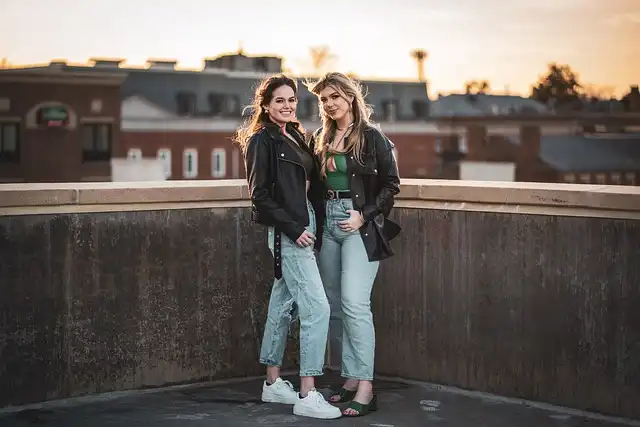Inconvenient Women: Australian Radical Authors & Their Legacy

Kent's 'Inconvenient Women' explores the lives & works of radical Australian women authors, their political engagements, & literary contributions from early 20th century. Highlights collaborative relationships & historical context.
Inconvenient Women is well investigated and provided appearance with a selection of resources, consisting of document in between some of these authors. Kent develops how the subversive national politics of her subjects educated their lives and their writing, and offers vital understandings right into the areas they formed.
Collaborative Networks of Women Authors
Much of these ladies sustained each various other across their often lengthy professions. Taking a look at the detailed webs of link and fruitful collaborative relationships– such as that between Marjorie Barnard and Plants Eldershaw, which created novels, plays, narratives and essays– Kent foregrounds the affections of those that relocated literary and left political circles throughout the 20th century. This is one of the staminas of a group biography as a method of reframing backgrounds where women have actually been omitted.
The level to which the women’s creating overtly involved with political concerns varied, as did their placements on communism. While Prichard and Christina Stead wholeheartedly supported it, author and critic Nettie Palmer showed up much more ambivalent.
Politics, Communism, and Women’s Writing
Kent reflects upon the obstacles encountered by these pioneering ladies authors. Devanny’s 1926 unique The Butcher Shop, which condemned the subservience of women in marriage, was the first publication to be prohibited in Australia. Other lesser-known women whose work “hovered at the border of what was acceptable” consisted of Jean Campbell, Doris Kerr and Marjorie Clark, that composed under the pseudonym “Georgia Rivers”.
Challenges Faced by Pioneering Women
There is, however, an important conversation of Aboriginal ladies writers and protestors, consisting of the poet Oodgeroo Noonuccal (Kath Walker) and the activist and author Confidence Bandler, in the book’s last and fifth area.
At times, the focus transforms to crucial male numbers, such as journalist and communist protestor Egon Kisch and Guido Barrachi, that was essential to the establishment of the Australian Communist Celebration and passionately included with females authors such as Lesbia Harford and Betty Roland. This can sidetrack from guide’s professed objective, though I recognize Kent’s initial comment that “guys number in this story, also, both as fans and antagonists”.
The limits of the “wave” metaphor to categorise periods of feminist advocacy are well known. Kent explicitly looks for to recentre women that remained in between the “waves”– that is, she is interested in those who followed the campaigns for females’s suffrage during the so-called “very first wave”, however predated the resurgence of Western feminism in the “second wave” of the 1970s.
Feminist Advocacy Between the Waves
To be a supporter of the left in the 1940s and 1930s, especially as a woman, could come at major price. As proof of the oppressive political environment, Kent goes over exactly how Dymphna Cusack, a teacher in inner-city Sydney, was moved to Bathurst after the publication of Jungfrau (1936 ), her debatable unique checking out female sexuality.
Kent starts with poet, writer and reporter Mary Gilmore. For greater than twenty years, from 1908 to 1931, Gilmore utilized the Female’s Page in the socialist magazine Employee to advocate for a mommy’s allocation, support ladies who desired to avoid marriage, and criticise Christianity for its presumptions concerning females’s natural inferiority.
The book’s five-part structure is sequential. Part one covers Federation, the granting of suffrage, and the first world war. It talks about a variety of 20th-century writers who developed their abilities in the journalistic area prior to publishing typically controversial and acclaimed books.
Communism, Kent comments, “influenced the job of some of Australia’s best females writers, whether they followed the Party or not”. The third section of Troublesome Woman thinks about just how they reacted to the second globe war, directly and properly.
Provided certain voices have traditionally been blessed over others, it is unsurprising that most of the females in this publication are heterosexual and white. A little even more representation on the conditions that made their professions feasible might have additional brightened how some “troublesome” ladies in Australia, as elsewhere, have constantly been viewed as even more acceptable than others.
At different factors in the book, I found myself wanting more representation on specific figures and the function of their work. But this is a restriction of the group biography sub-genre rather than Kent’s writing. Bothersome Women may function as an introduction for some readers, triggering interest about these remarkable ladies and a need to look for their publications, plays and poems. For others, it could brighten links between these numbers, or give a much deeper understanding of their historical and cultural contexts.
The second part of Inconvenient Women covers brows through to the Soviet Union in the 1930s by Roland, Prichard, and Pamela Travers, the Australian-born author of Mary Poppins. Later on in the years, Palmer and Stead took a trip to Spain, ending up being caught up in the civil war and the demonstrations against fascism. For Palmer, the experience cemented the significance of art as a “weapon”.
Anthea Taylor does not benefit, seek advice from, own shares in or obtain financing from any firm or organization that would certainly gain from this post, and has divulged no pertinent associations past their scholastic consultation.
Inconvenient Ladies does not have a final thought. Its account stops prior to the 1970s, an unstable time of social and political change, when “troublesome females” became much more visible than at any type of various other time in Australian background. Some added gesturing towards subsequent developments could have provided a more powerful sense of exactly how the structures laid by these trailblazing women were built on by second wave writers-as-activists, such as Germaine Greer and Anne Summers.
The book’s subtitle– “Australian radical authors”– clarifies its focus. Kent does not clearly review the standards for addition, however it ends up being clear that “radical” is shorthand for the most left-leaning females authors and lobbyists in the very first two thirds of the 20th century.
Accordingly, a lot of the book is busied with tracing their diverse involvement with political concepts and organisations. As Kent clears up in guide’s first couple of pages: “These were all females that utilized their power with words on behalf of their ideas, and to examine and alter elements of the globe they knew.”
Written in a available and appealing style for a wide audience, Kent’s ambitious group biography positions these formidable females at the forefront of Australia’s literary, cultural and political background. Covering a duration of 70 years, Kent maps the social and political changes that allowed and constricted these females writers. Their advocacy took various kinds across various periods, but also for all of them composing was a key tool in their political collection.
Whatever the instance, Kent prompts us to recognize and reconsider the tradition of these powerful Australian ladies. Each of them, in their own way, versions what it is to be an “bothersome” female– something we definitely need currently, probably more than ever.
Kent additionally emphasises how these women looked for to ensure that writing be taken seriously as a kind of labour. Women were extremely active, too, in the Australian Society of Authors, established in 1963 and still thriving today.
Women’s Writing as Labor
Continuing the book’s passion in women that might have been neglected, Kent shows how Australian battle correspondents, such as Female’s Weekly reporter Adele “Tilly” Shelton-Smith and Lorraine Stumm from the Daily Mail in England, played a vital duty during this turbulent time.
Kent makes it clear, nonetheless, that this is a “joint biography”, not a job of history or literary criticism. Bothersome Women concentrates on exactly how these females lived and exactly how their literary contributions were notified– and indeed implemented– by their more unorthodox methods of being and living, as opposed to on the creating itself.
For Kent, these renowned ladies were “bothersome” in lots of methods. They sought occupations as reporters, poets and authors at times when several females were delegated to the private ball.
Despite living unique lives, Kent suggests a number of these authors were not obvious in their feminism. Dorothy Hewett’s social realist novel Bobbin’ Up stands for a change in this regard. Published in 1959, it is better to the growing modern-day females’s movement than any type of various other literary text thought about in guide.
The problems of posting in such a setting, particularly for women, are brought right into sharp alleviation throughout guide. In the fourth area, which covers the years 1945– 60, Kent deals with the difficulties experienced by ladies looking for to involve with the androcentric publishing market. This is exemplified by the protracted magazine trip of Been available in Spinner (1951 ), co-written by Cusack and Florence James, which won a reward as an unpublished manuscript in 1946, only for its publication offer to be taken out. It at some point showed up 5 years later in a purged variation.
Publishing Challenges for Women
As Kent reveals, monitoring proceeded into the 1950s. Writers were increasingly based on keeping an eye on by ASIO. This included those that had actually obtained grants from the Commonwealth Literary Fund, such as Kylie Tennant, who returned the money after conventional legislator Expense Wentworth publicly classified her a communist.
Kent’s dedication to reassessing ladies writers who have actually not been forefronted in literary or social history, such as poet Marie Pitt, is admirable. However, some of these numbers– Marion Knowles and Elinor Mordaunt (the pen name of Evelyn May Clowes), for example– are just given short paragraphs. This improvement is a crucial attribute of guide, and I intended to learn more concerning these historically marginalised ladies.
For Kent, these famous ladies were “inconvenient” in many ways. Extending a duration of 70 years, Kent maps the cultural and political shifts that allowed and constrained these women writers. Kent’s dedication to reviewing females authors who have actually not been forefronted in literary or social history, such as poet Marie Pitt, is admirable. Communism, Kent statements, “affected the job of some of Australia’s best ladies writers, whether they complied with the Celebration or not”. Troublesome Females may work as an introduction for some viewers, sparking inquisitiveness concerning these exceptional ladies and a need to seek out their publications, poems and plays.
1 20th century2 Australian authors
3 Black Women Writers
4 feminist history
5 political activism
6 radical authors
« Museums, Libraries & Copyright Under Attack: Trump Administration ActionsBook Publishing & Library News: Events, Copyright, and Controversies »
